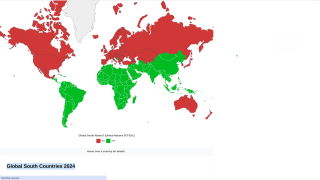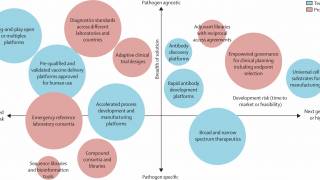“Disease X’ Added to the R&D Blueprint List

There is a new member of the World Health Organization's (WHO) infamous list of the leading infectious diseases.
More importantly, this list of diseases are ones to avoid.
By including ‘Disease X’ on its “List of R&D Blueprint priority diseases,” the WHO acknowledges that infectious diseases are unpredictable.
The purpose behind including ‘Disease X’ as the 9th disease is not to scare everyone, but to spur public health officials into action to prepare for every infectious disease threat.
The R&D Blueprint is a global strategy and preparedness plan that allows the rapid activation of R&D activities during epidemics. Its aim is to fast-track the availability of effective tests, vaccines, and medicines that can be used to save lives and avert large-scale crisis.
The R&D Blueprint explicitly seeks to enable R&D preparedness that is relevant for an unknown “Disease X”. ‘Not just the predictable diseases,’ said the WHO during the second annual review on February 7, 2018.
These health experts consider that given the identified diseases potential to cause a public health emergency and the absence of efficacious drugs and/or vaccines, there is an urgent need for accelerated research and development for these diseases:
- Crimean-Congo haemorrhagic fever (CCHF)
- Ebola virus disease
- Marburg virus disease
- Lassa fever
- Middle East respiratory syndrome coronavirus (MERS-CoV) and Severe Acute Respiratory Syndrome (SARS)
- Nipah and henipaviral diseases
- Rift Valley fever (RVF)
- Zika
- Disease X
*The order of diseases on this list does not denote any ranking of priority, nor does it indicate the most likely causes of the next epidemic.
February 6-7, 2018 was the 3rd time the WHO convened this committee of experts in viruses, bacteria and infectious disease to consider potential epidemics and pandemics. It was the first time that Disease X made the list.
A number of additional diseases were discussed and considered for inclusion in the priority list, including: Arenaviral hemorrhagic fevers other than Lassa Fever; Chikungunya; highly pathogenic coronaviral diseases other than MERS and SARS; emergent non-polio enteroviruses (including EV71, D68); Severe Fever with Thrombocytopenia Syndrome (SFTS); Monkeypox and Leptospirosis.
For the purposes of the R&D Blueprint, the WHO developed a special tool for determining which diseases and pathogens to prioritize for research and development in public health emergency contexts.
The first list of prioritized diseases was released in December 2015. Using a published prioritization methodology, this list was first reviewed in January 2017.
This tool seeks to identify those diseases that pose a public health risk because of their epidemic potential and for which there are no, or insufficient, countermeasures.
Disease X represents the knowledge that a serious international epidemic could be caused by a pathogen currently unknown to cause human disease.
In particular, these experts recognized that existing drugs and vaccines need further improvement for several of the diseases considered but not included in the priority list.
Also, there are concerted efforts by the WHO to address anti-microbial resistance through specific international initiatives. The possibility was not excluded that, in the future, a resistant pathogen might emerge and appropriately be prioritized.
Our Trust Standards: Medical Advisory Committee








